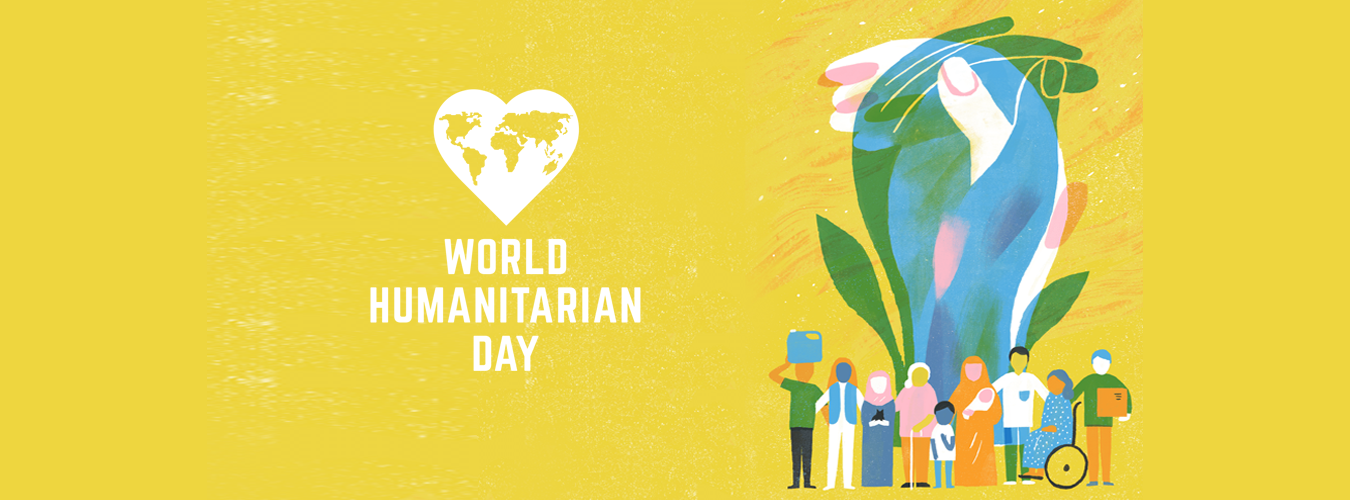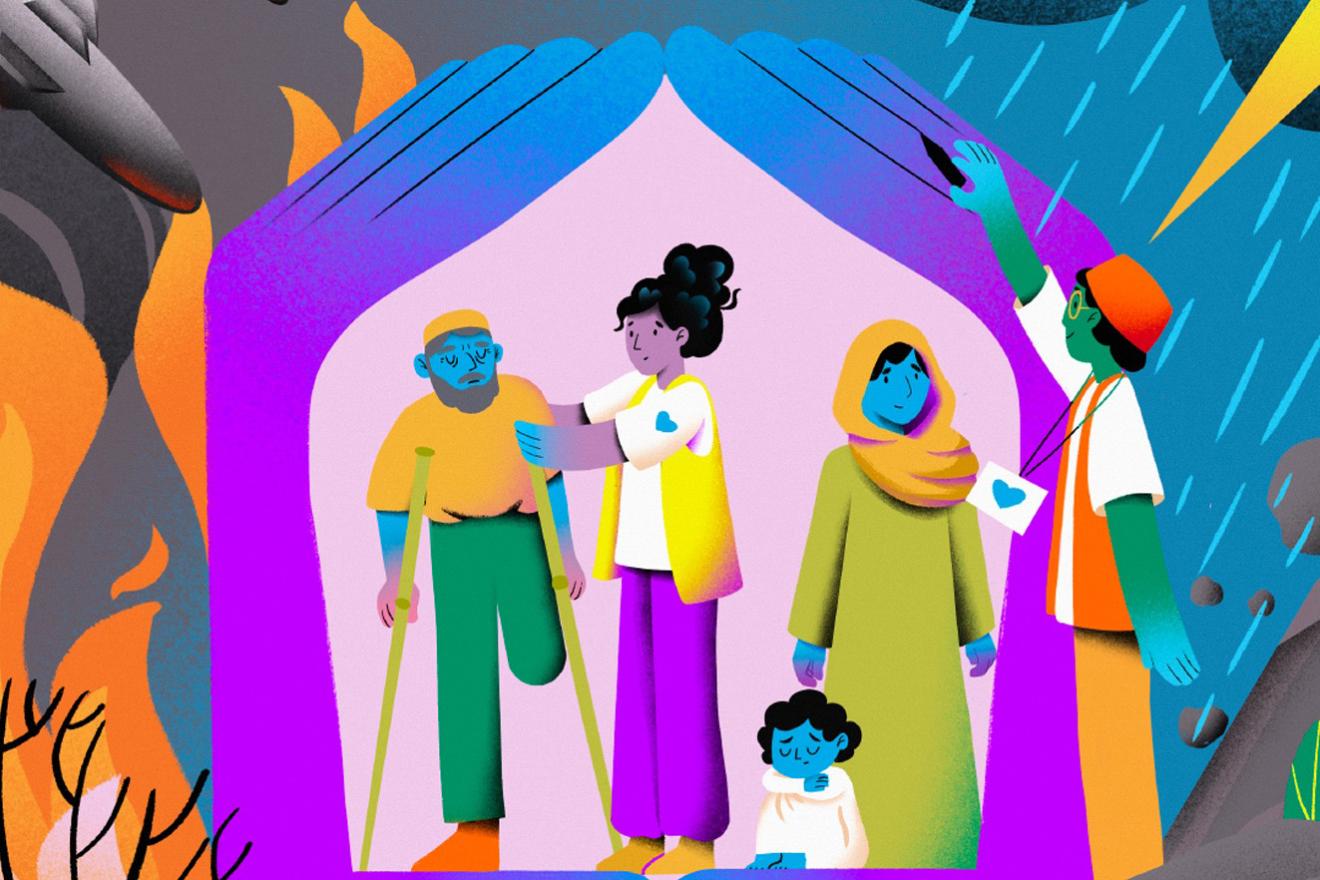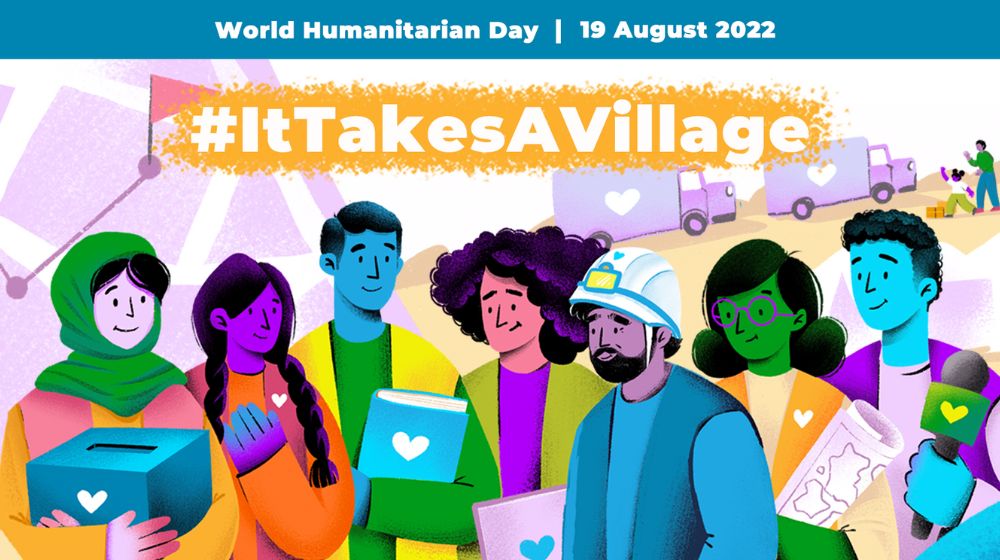For this year’s WHD, UN are using digital art to tell the stories of people in need and those who help them. At the centre of the campaign is a series of beautifully illustrated aid worker profiles that show the breadth and depth of humanitarian work and collectively symbolize the wider humanitarian village.
Whenever and wherever people are in crisis, there are others who help them.
From the affected people themselves - always first to respond when disaster strikes – to the global community that supports them as they recover, they come together to ease suffering and bring hope.
Because, as the saying goes: It takes a village to support people in crisis.
Education:
"A lifeline for children in crises."
When crises hit, children lose loved ones, homes, and access to essentials such as water, health care and food. But they also lose safety, routine and access to education. In these situations, teachers are vital.
They help children to learn so they don’t risk losing their future, and they ensure children have safe environments, protecting them from physical dangers including abuse, exploitation and recruitment into armed groups.
Teachers also offer psychosocial support to children – especially girls, children with disabilities, internally displaced children, refugees and migrants – giving them stability and structure to help them cope with the trauma of living through a humanitarian crisis.
- Did you know?
- Teachers:
Everything you need – from graphics to templates to suggested messaging – is available here.
G-Souto
19.06.2022




No comments:
Post a Comment